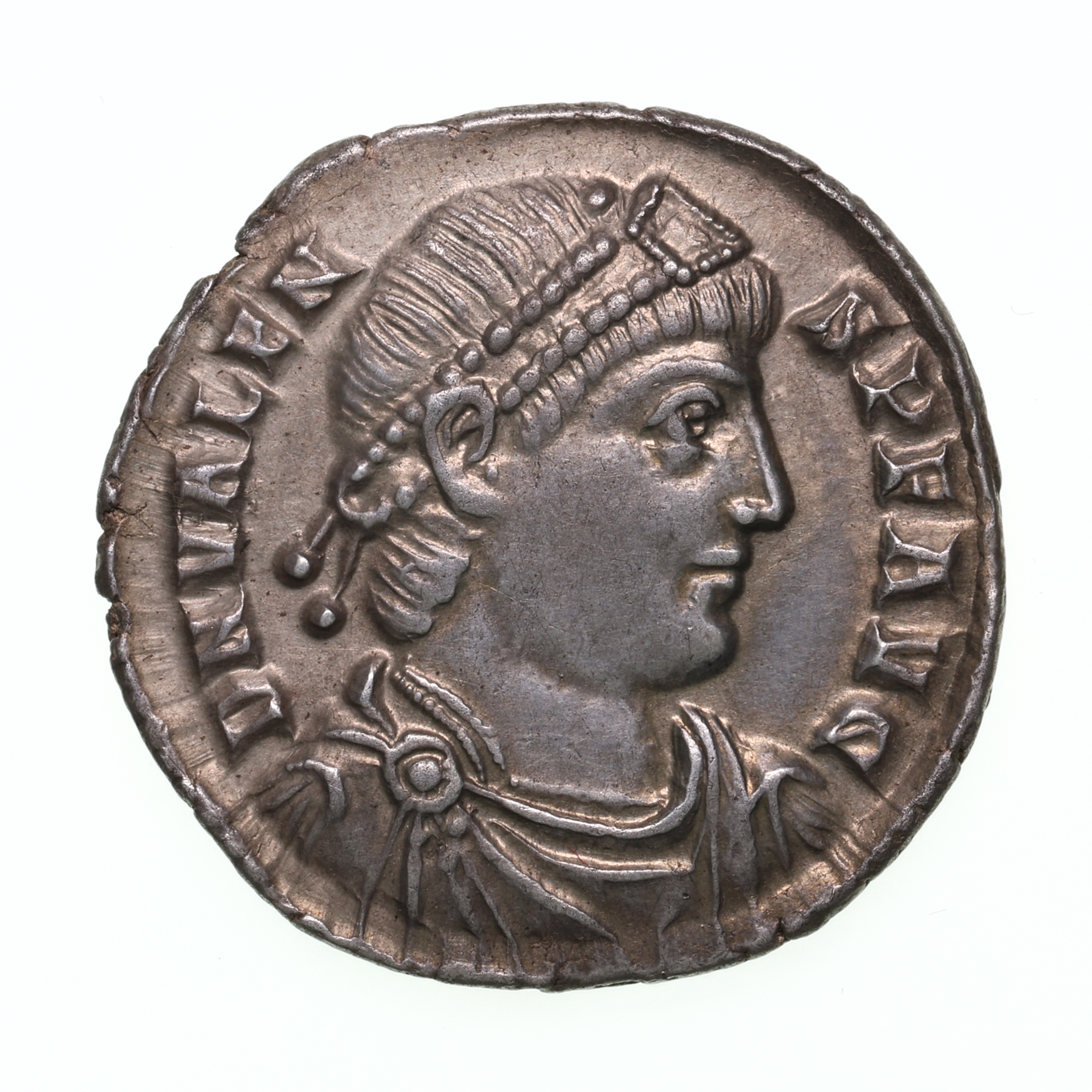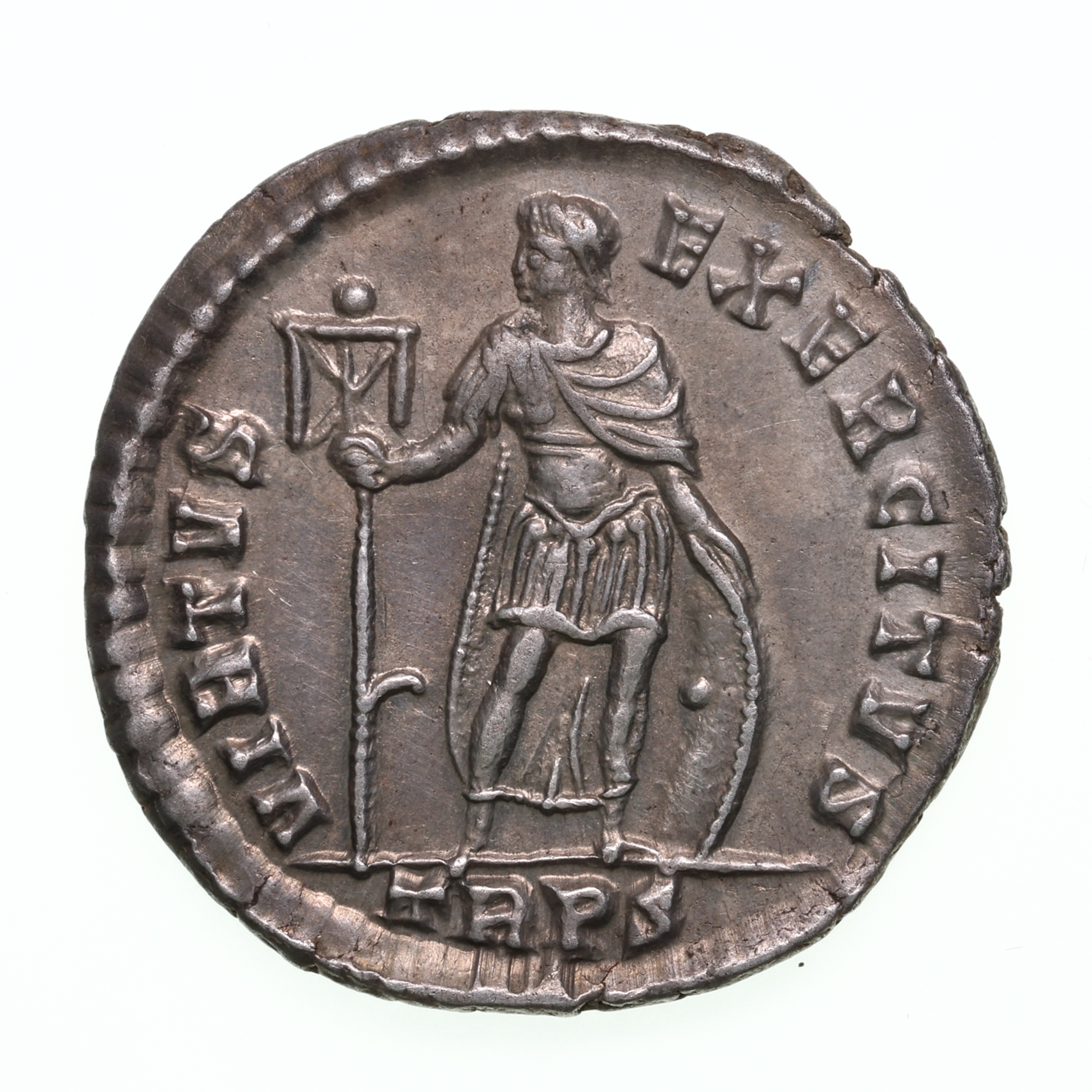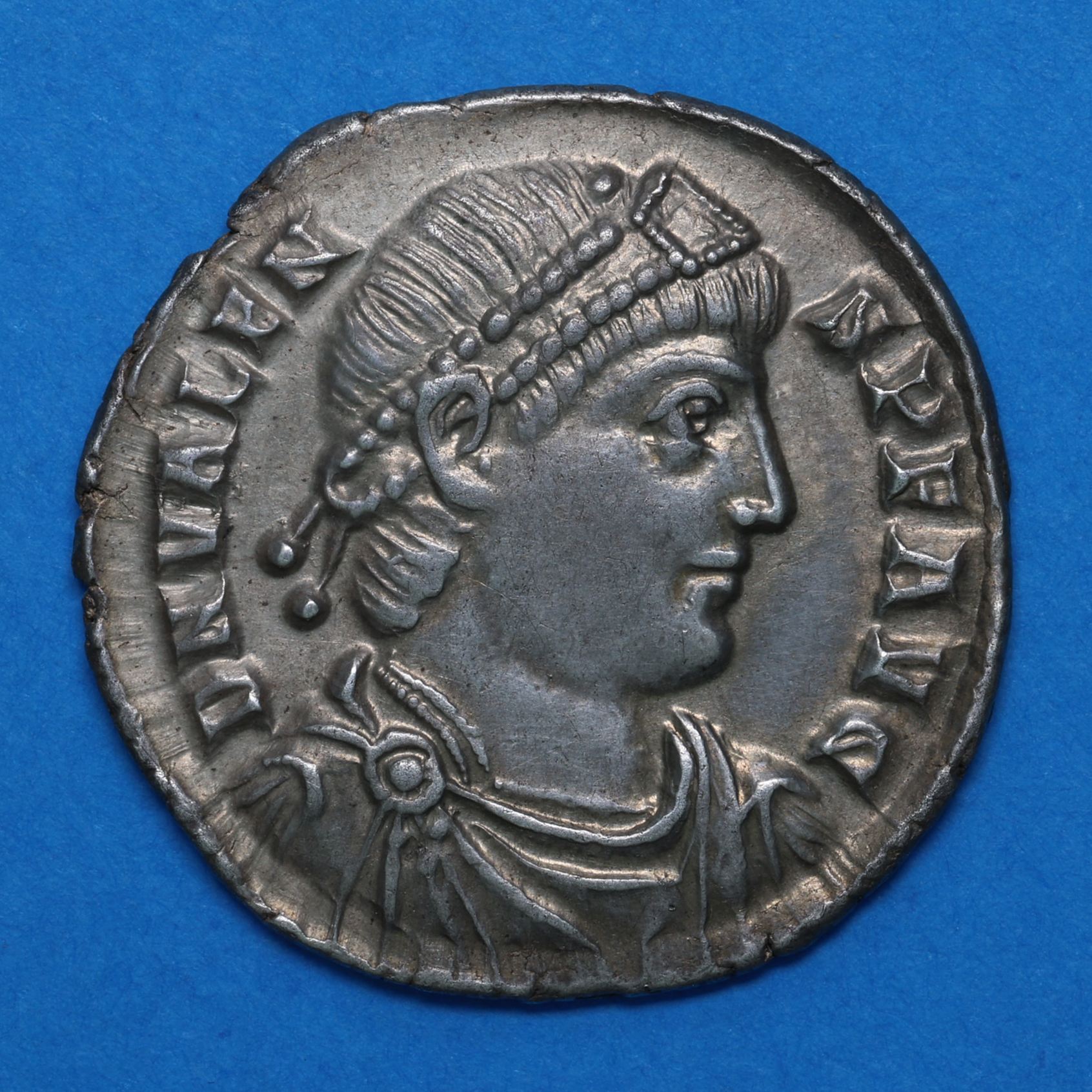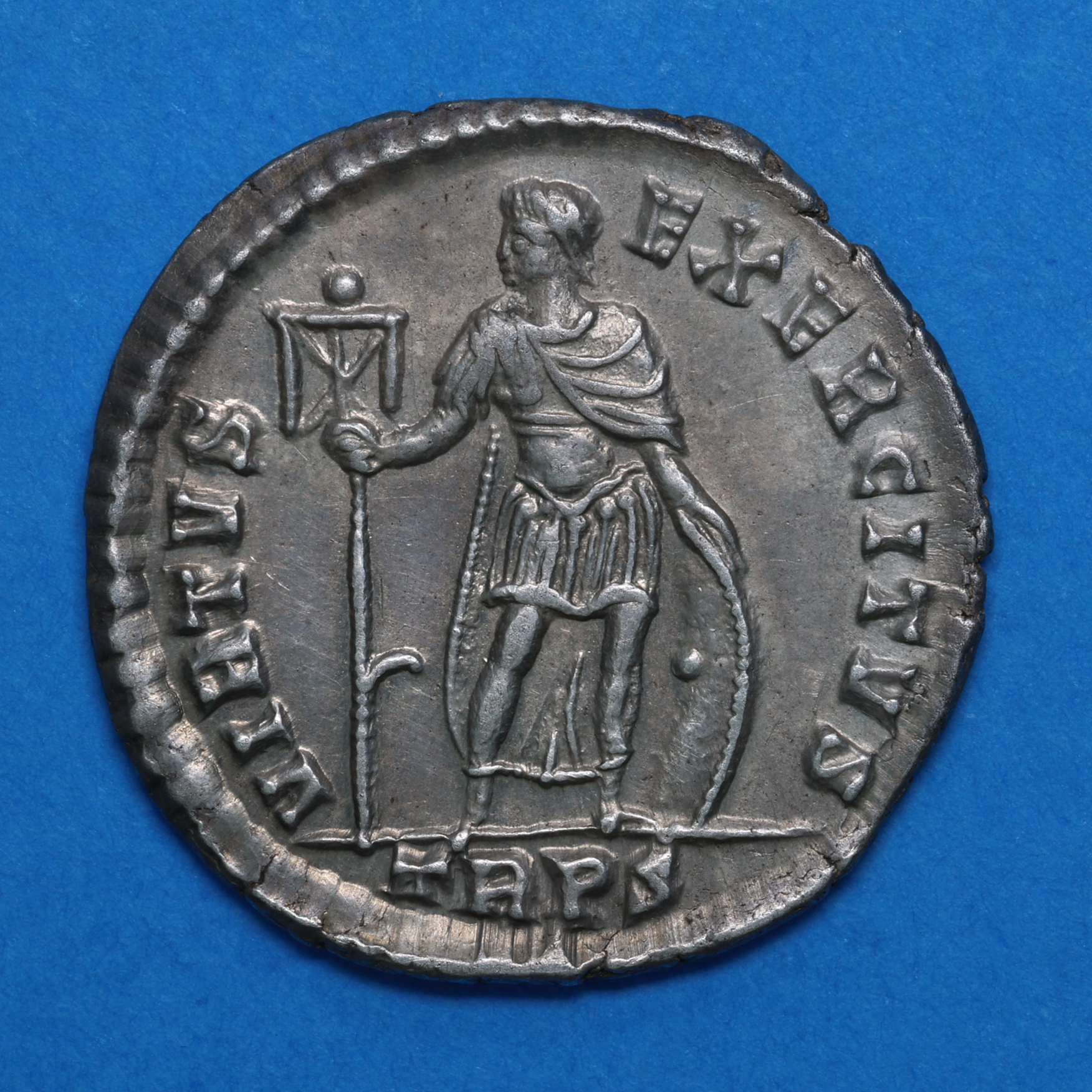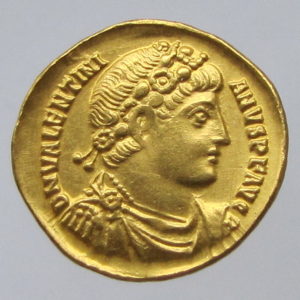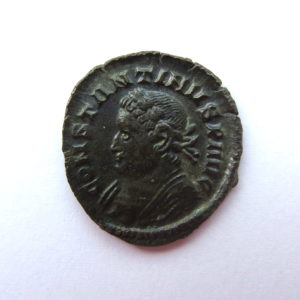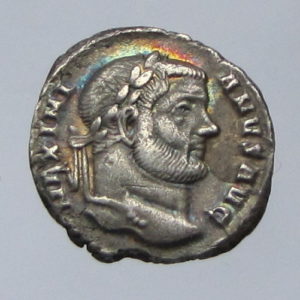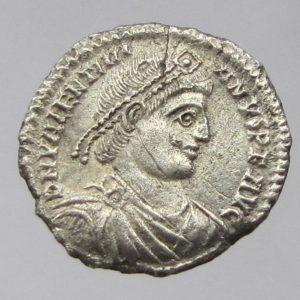Valens AD 364-378 Silver Miliarense Trier mint
£3,250.00
Valens AD 364-378 Silver Miliarense
Draped and cuirassed bust right/Valens in military attire standing facing with head left holding standard and leaning on shield.
Trier mint
RCV19649; 23mm, 4.35g
A wonderful example struck in good metal and without the usual flan cracks. Little wear, fantastic surfaces and pleasing light yellow brown tone.
Valens AD 364-378
Valens has been described as being utterly undistinguished and with no military ability. Yet he was a conscientious administrator and did reduce the burden of taxes. He is perhaps best known for his defeat and death at the Battle of Adrianople in AD 378 which marked the beginning of the end of the Roman empire.
Valens and his older brother Valentinian were born in Pannonia to a senior army officer although they grew up on estates in Africa and Britain. Both brothers were brought up as Christians although of different sects. In adulthood Valens served in the bodyguard of both emperors Julian and Jovian. When Jovian died in AD 364 Valentinian was proclaimed emperor. As a younger brother to Valentinian, Valens was selected as co emperor in AD 364 and given the eastern empire to administer.
From the start he faced both internal and external threats starting with the usurper Procopius, a cousin of Julian Apostate, who he eventually defeated in AD 366. Afterwards he campaigned against the Goths then focusing on the eastern frontiers where he faced threats from the Persians, Saracens and Isaurians. Initially Valens was victorious against the Goths and took the title Gothicus Maximus. Valens was then faced with a threat from Sasanid empire and so to end the war with the Goths he agreed to a peace with their king, Athanaric, whom he met on a boat on the Danube where a treaty was signed in AD 370.
Unrest in Armenia resulted in an invasion by the Persians although they were initially defeated by the Roman forces. Meanwhile hordes of Huns from Central Asia drove the Goths back across the Danube and into the empire. Although the some of the Goths were willing to fight with the Romans as mercenaries Valens generals accepted bribes. Instead of depriving the Goths of weapons as Valens had stipulated they enraged them by charging them exorbitant prices for food. In AD 377 the Goths revolted and after joining forces with the Ostrogoths led a major invasion which spread out to devastate the surrounding countryside. After a considerable delay they were eventually confronted by Valens and his army at the Battle of Adrianople. This resulted in a disastrous defeat for the Romans, the death of Valens and slaughter of most of the Roman army.
Out of stock

